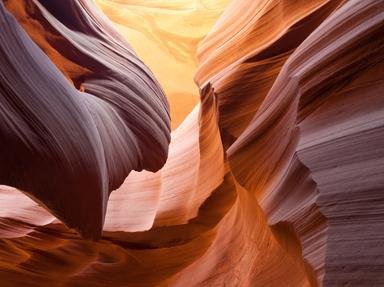Quiz Answer Key and Fun Facts
1. The Bay of Fires in Tasmania took my breath away. These orange coloured rocks are composed of granite but what gives them their brilliant hue?
2. The Twelve Apostles is a rock formation found along the Great Ocean Road in Victoria. What type of geological landform is it?
3. The somewhat surprisingly named Walls of China are found within Mungo National Park in New South Wales. Did glaciation play a part in their formation?
4. A popular tourist attraction in South Australia is the Sunken Garden. What kind of feature was this originally?
5. The otherworldly landscape of the Pinnacles in Western Australia was caused by which geological process?
6. Hamelin Pool, in the Shark Bay Heritage Area of Western Australia, is one of the only places in the world to have living marine stromatolites. Fossils of stromatolites can be found in which type of rocks?
7. The Bungle Bungle Range is in what unique shape?
8. Western Australia is home to a unique natural formation called the Horizontal Falls. Are these the only ones of their kind in the world?
9. Which of these geological formations would you be able to see at Undara in northern Queensland?
10. No quiz on Australia's natural wonders would be complete without Uluru. What rock is the stunning feature composed of?
Source: Author
zorba_scank
This quiz was reviewed by FunTrivia editor
rossian before going online.
Any errors found in FunTrivia content are routinely corrected through our feedback system.
